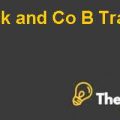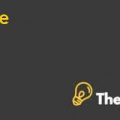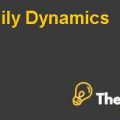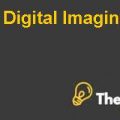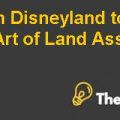Murphy Stores: Capital Projects Case Study Solution
Executive Summary
The Murphy Stores has around $ 7 million, which it has to invest, and according to the case, there are two investment opportunities available, which the finance manager of the company is evaluating. One of the projects is to invest in “Electronic Article Surveillance (EAS)”; this would be an advanced technology that would result in minimizing the number of burglaries from their retail outlets, which has recently become quite a big challenge for Murphy Stores to control.
And with the implementation of this robust technology, the company would be able to enjoy several advantages. For instance, there will be better revenue in terms of “differential sales”, and the company would be able to save a substantial amount in terms of its “cost of sales” involved and, resultantly, would enjoy improved gross profits. Secondly, the company has another option to invest its $ 7 million, and this is where the amount will be used for cost savings by installing “energy efficient lighting” in all of its warehouses and outlets involved.
As a result, the demand for lighting resources would reduce by almost “30-40%”, and obviously would improve the visibility in the stores and warehouses and also reduce the consumption of the air conditioning installed, which are the major expenses comprising the total energy costs of the company. Furthermore, since the company has objectives, endorses energy conservation, and has multiple sustainability goals, implementing such technology will allow Murphy Stores to support the abovementioned objectives.
Both options are equally important and feasible and support the objectives of the Murphy Stores. However, it is important to carefully analyze strong financial numbers and also some of the non-quantitative factors that would be more fruitful in the longer time and be more sustainable for the company. As the money ($ 7 million) is a much big amount, and if not invested wisely currently, then this could have serious consequences for the company in the longer term, as the cost of energy and also the costs from the burglaries in their retail outlets are both major issues that company is currently facing.
After analyzing all the calculations, value measures, advantages, and disadvantages of both projects it presents that the EAS project has more potential to generate high and positive returns for the Murphy stores. EAS projects can produce good returns in the worst or best situations and also deliver a high number of qualitative advantages in terms of reducing theft and shrinkage costs.
Discussion over Firm and Calculated WACC
Looking over the case of Murphy stores there is an opportunity to invest in a new project but on another hand, there is also a challenge to invest in an appropriate project to get higher returns. Moving forward toward the project analysis there is a need to calculate the weighted average cost of capital for the organization it helps to understand the estimated percentage of return over the investments. There are two ranges allocated for the WACC in which a high percentage of WACC presents that investment or project becomes riskier and on other hand, the lower WACC presents more stability in the project.
After analyzing the Murphy stores project evaluation review process it presents that the organization has (12%) of the weighted average cost of capital, which also uses as the discount rate for project valuations. After using the given data from the case the calculated WACC is about 8.12%, which consider low compared to the firm’s evaluation review process percentage. For the calculation of WACC use the data from the case in which the organization's average tax rate is about (39%).
The capital structure of the Murphy stores presents the weight of its debt and equity, which is 20% and 80% respectively. The cost of equity is calculated by using the organization's equity beta, risk-free rate, and market premium. Using the data from the case (Exhibit 1) it presents that the equity beta of Murphy store is (1.20), the risk-free rate is (4.5%) under medium-term treasury notes, and the market premium is (7%) under treasury notes. By using these values the calculated is about (13%) and the cost of debt is (15%) by using the weight of debt, tax rate, and the risk-free rate.................
Murphy Stores Capital Projects Case Study Solution
This is just a sample partial case solution. Please place the order on the website to order your own originally done case solution.



